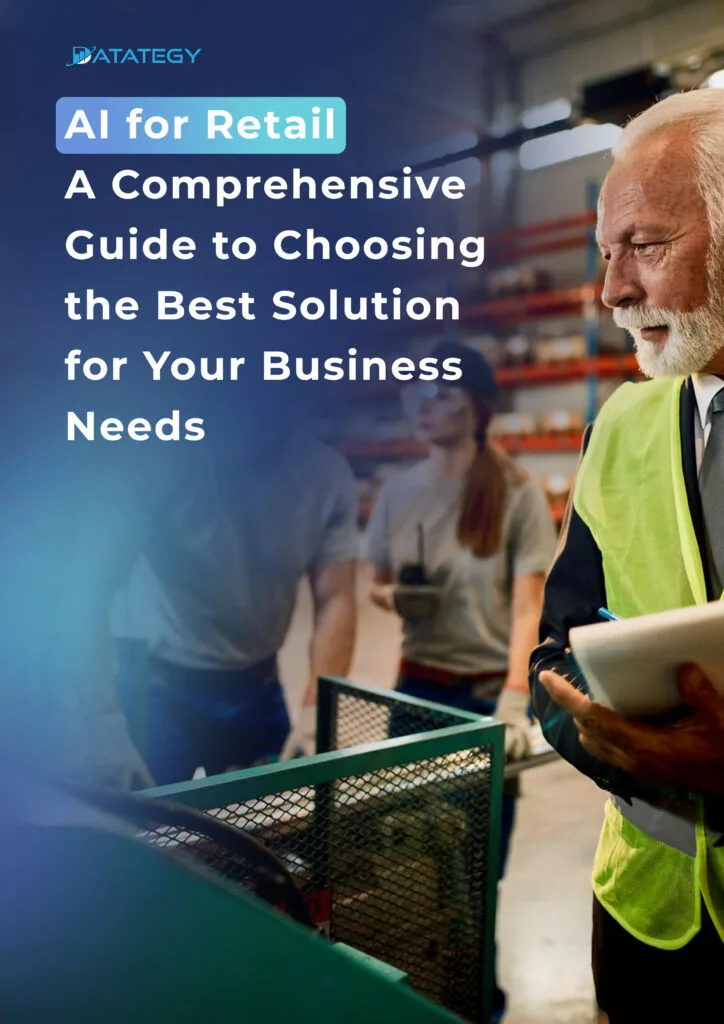How Law Firms Use RAG to Boost Legal Research RAG...
Read MoreBusinesses in retail work hard to improve client loyalty and experiences. This calls for the creation of engaging content, effective marketing strategies, and top-notch customer support. Retailers can use automation and creativity to tackle the majority of these problems by utilizing generative AI.
According to the last study, 60% of retailers plan to adopt generative AI solutions next year. (Source: Salesforce)
Find out how papAI can improve the deployment of AI projects in the Retail sector here.

The potential of AI is expected to be expanded because of this combination of generative power and contextual intelligence, In this article, we will dig deeper into the role of generative AI solutions as papAI 7 and the challenges behind this technology.
Overview of Generative AI
The capacity of generative AI (a subset of artificial intelligence) to imitate and create material that seems authentically human-generated has attracted a lot of interest.
Generative AI possesses the exceptional capacity to generate fresh and original material on its own, in contrast to typical AI models that rely on pre-existing data.
Within the retail industry, this technology presents hitherto unseen opportunities, allowing companies to produce creative product descriptions, visual content designs, and even customized marketing collateral. Below we can explore the core ideas and possible uses of generative AI, emphasizing how it might revolutionize the retail industry.
Challenges in Implementing Generative AI
The complexity of integration is one of the major obstacles to deploying generative AI, especially in the retail industry. Generative AI models are smoothly integrated into current processes and systems as part of the integration process, guaranteeing a peaceful coexistence with other technologies. The complexity emerges from the necessity of coordinating these sophisticated models with a variety of data sources, product listings, and consumer contact points.
Unlocking the full potential of generative AI in retail requires a seamless integration procedure. It takes a strategic strategy, strong technical know-how, and in-depth comprehension of the retail industry’s unique requirements in addition to the current state of technology to overcome these obstacles. In the sections that follow, we’ll look at ways to get over integration challenges and help merchants make use of generative artificial intelligence.
AI's Impact Through Retail Use Cases
1- Product Design
Artificial intelligence (AI) is becoming a disruptive force in product design, changing the way things are designed and created. Artificial Intelligence (AI) adds value to design by analyzing large datasets, interpreting user preferences, and coming up with creative solutions. This data-driven strategy guarantees that the final product closely matches the expectations and preferences of the target audience while also expediting the design phase.
Personalized and adaptable experiences are a major area in which AI shines in product design. Designers may obtain insights into customer behavior, preferences, and trends by utilizing machine learning algorithms. This information makes it possible to customize goods to match the demands of particular clients, resulting in a more interesting and fulfilling user experience. Because AI can recognize subtle patterns and predict user preferences, designers can create products that truly connect with their target market.
2- Chatbots
Natural language processing (NLP) and machine learning techniques are used by AI-driven chatbots to comprehend and provide remarkably accurate answers to user requests. This enables companies to efficiently manage a wide range of requests in addition to offering a smooth and prompt customer support experience. Chatbots with AI capabilities are always learning from human interactions, which allows them to develop and get better over time.
Artificial intelligence-enhanced chatbots may customize replies depending on user behavior, past interactions, and the context of the present discussion by using sentiment analysis and user behavior monitoring. This degree of customization makes the exchange more interesting and focused on the needs of the client.
3-Product Recommendation
AI-driven recommendation systems examine user behavior, preferences, and past purchases using complex algorithms like content-based and collaborative filtering. AI can provide highly customized product recommendations based on individual preferences and requirements by analyzing these data points, resulting in a more individualized shopping experience.
Understanding complex patterns and correlations inside huge datasets is a key benefit of AI-powered product suggestions. Small relationships between various items and consumer preferences that may not be seen using conventional analytical techniques can be found using machine learning models.
4- Marketing Optimization
Creating customized and targeted advertising is a crucial use of AI in marketing. Marketing professionals can now produce highly customized content and campaigns that appeal to individual interests because of machine learning algorithms’ ability to scan and comprehend customer data. In addition to improving consumer engagement, this degree of customization greatly raises the overall efficacy of marketing campaigns, increasing conversion rates and return on investment.
AI-powered marketing tactics make automation and real-time optimization possible. AI systems may dynamically modify advertising campaigns, pricing methods, and content distribution to maximize effect because of their capacity to continually analyze and react to changing market conditions.
AI for Retail: A Comprehensive Guide to Choosing the Best Solution for Your Business Needs
Think about things like scalability, compatibility with your company goals, privacy and security of your data, and interaction with current systems when selecting an AI solution. You may select an AI solution that can support your retail business’s success in a dynamic market by carefully weighing these elements.

5- Product Description
.. Companies may simplify this part of content development by using artificial intelligence (AI) to replace labor- and resource-intensive traditional methods of writing product descriptions. A subset of artificial intelligence called natural language processing (NLP) algorithms is used to analyze large volumes of data and produce product descriptions that are clear, logical, and pertinent to the context.
- Context-Aware Generative AI: What Does It Mean?
Imagine an AI system that considers the who, what, where, when, and why—the basic foundations of context—in addition to just generating text, images, or replies.
For instance, the user may choose the length of the text to automatically produce product descriptions on the latest version of papAI. Using this criterion, the user may create a description that is appropriate for his online store, social media platforms, and internal brochures while still taking into account the limitations of the latter.
- Leveraging Large Language Models for Precise Output
Case Study:
From Concepts to Tangible Content - Watch papAI 7 Demonstration
At this stage, there’s nothing better than watching a video that explores a real-life use case.
Watch the #papAI7 demo and redefine your possibilities, this live demo shows the innovative prowess of the latest iteration of papAI, which promises to revolutionize content creation by harnessing the power of #adaptability and #scalability :
Utilising papAI solution, you may make your own AI-based generative tool to address your specific use case
With papAI solution, you have the chance to totally change your approach to content production. You may design an AI-driven toolset that precisely matches your needs with our platform’s assistance. Using cutting-edge machine-generated learning techniques can help you create content that is more accurate and efficient.
To learn more about how the papAI solution can change your AI landscape, schedule your personalized demo right now. Our team of professionals can assist you in developing a special AI-based product that satisfies the particular requirements of your company.
Interested in discovering papAI
Our team of AI experts will be happy to answer any questions you may have
How RAG Systems Improve Public Sector Management
How RAG Systems Improve Public Sector Management The most important...
Read MoreScaling RAG Systems in Financial Organizations
Scaling RAG Systems in Financial Organizations Artificial intelligence has emerged...
Read MoreHow AgenticAI is Transforming Sales and Marketing Strategies
How AgenticAI is Transforming Sales and Marketing Strategies Agentic AI...
Read More


